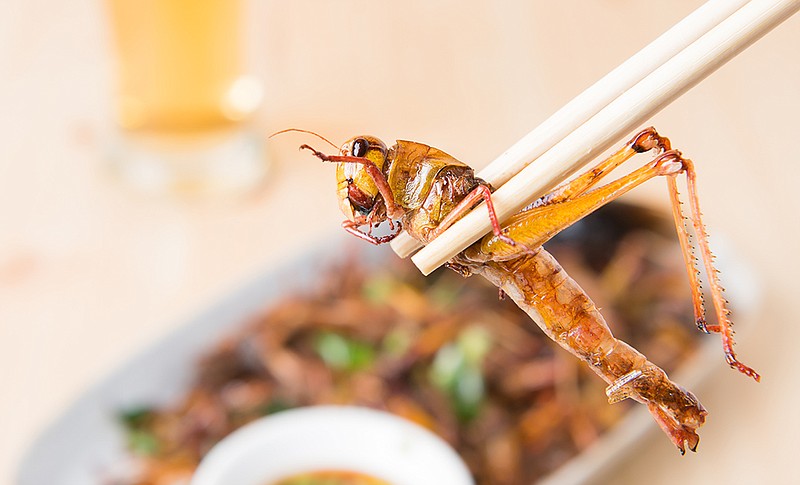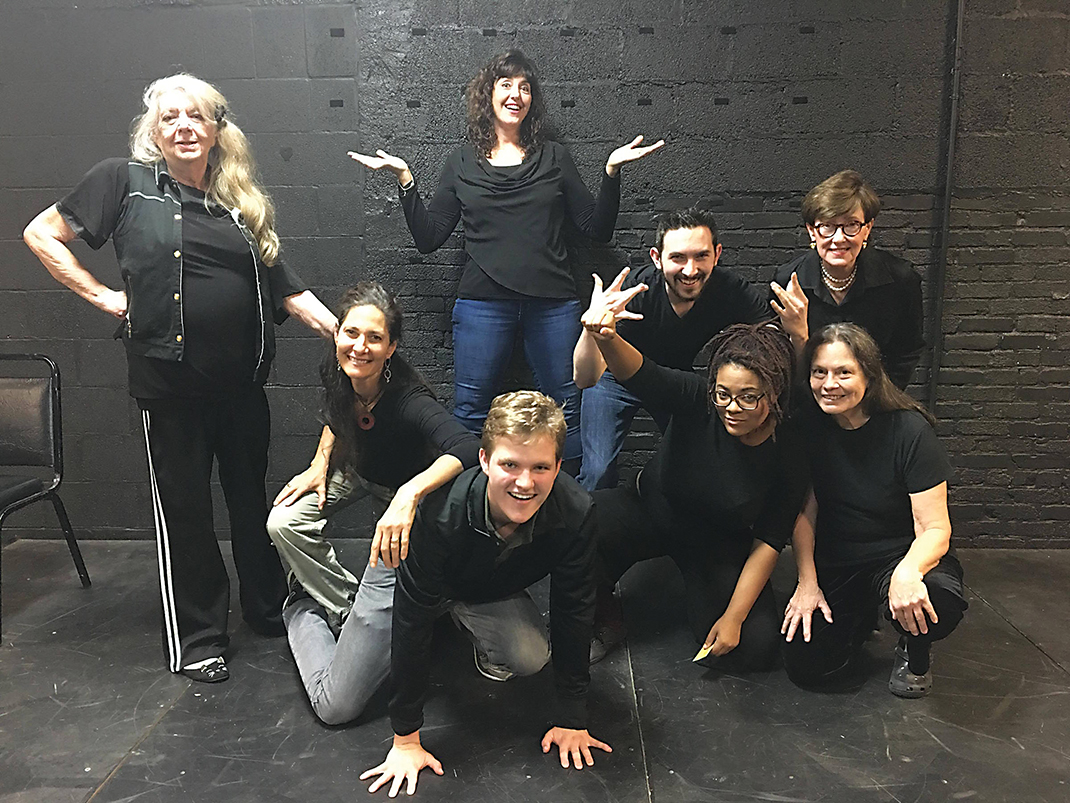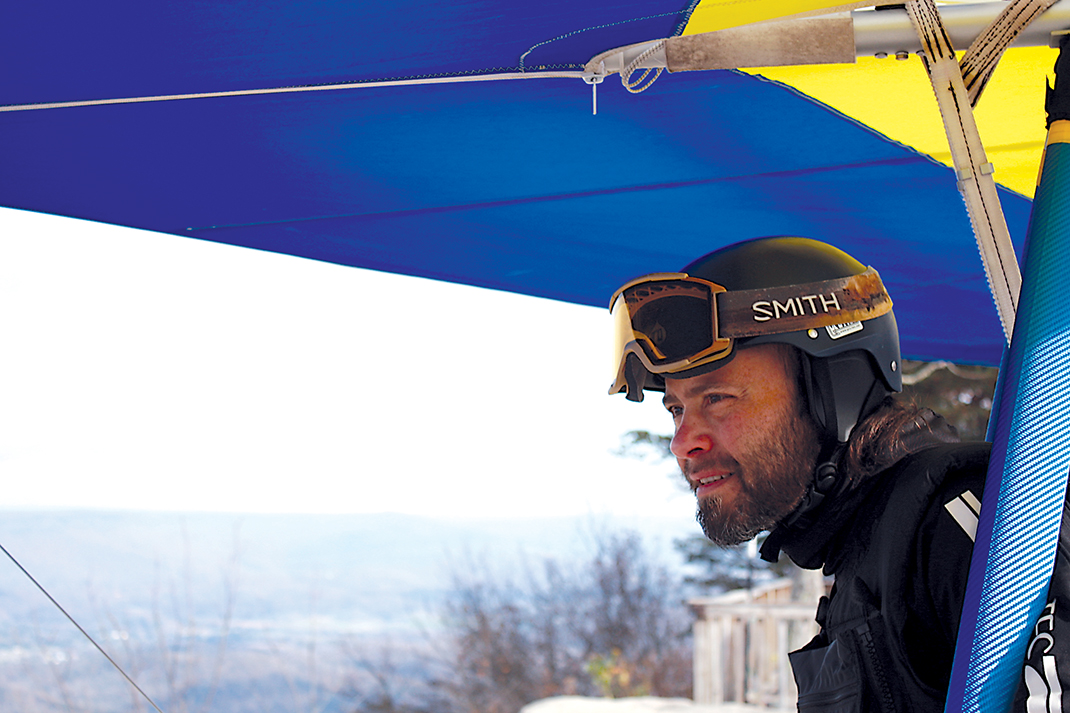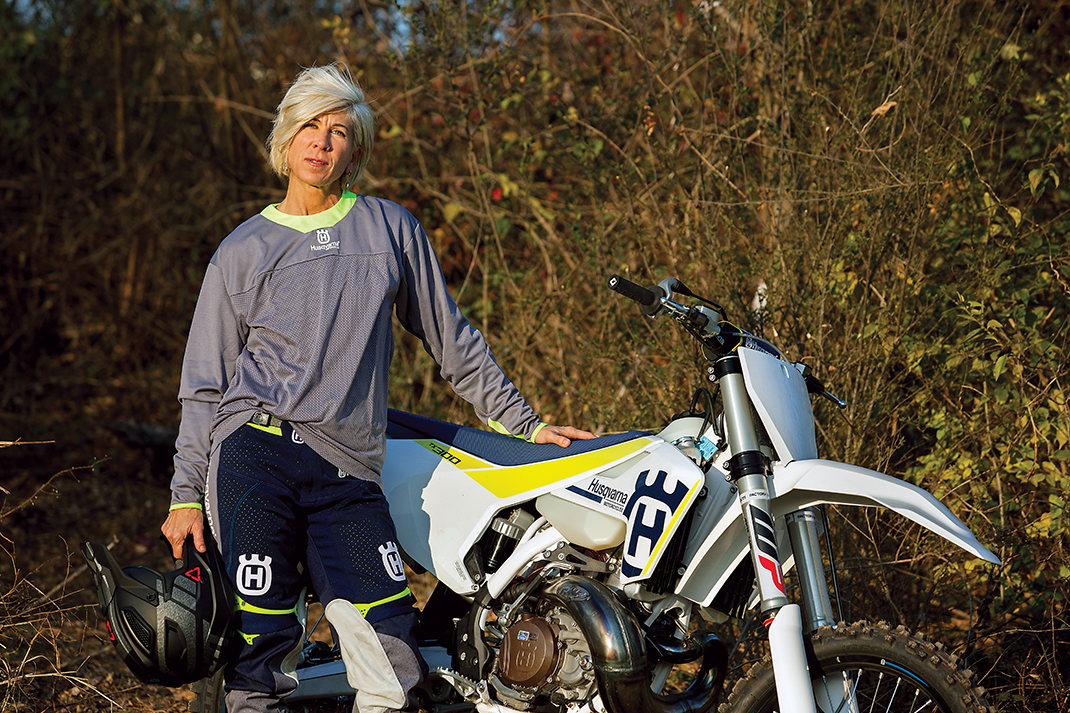A while back, I was asked to record what I thought was going to be a 30-second promotional blurb for a local radio station. Because it would be so brief, I didn't bother to write anything down (or to take the beta-blockers that are crucial to taming the wildfire of my public speaking phobia). After a horrifying 40-minute interrogation into my listening habits, which, owing to my anxiety, I was unable to expound upon, I left the station. Deeply ashamed, I vowed to never show up unprepared for a public appearance again.
The next day, I enrolled in an improvisational acting class.
Patrick McGrath, Ph.D., a contributor to Psychology Today magazine, has a sign in his office that reads, "Do something every day that scares you." It's a refrain popularized by those who would have us believe that fear is a cauldron from which emotional fortitude is forged. While psychologists are quick to clarify that too much fear or fear avoided or confronted in unhealthy ways can be emotionally damaging, actively managed fear - the kind of trepidation that comes with trying new things - can grow us in ways we might never have imagined.
When I signed up for improv classes, it was with the hope that on the other side of terror would emerge a stronger, more confident me. It was about time, I thought. I was about to turn 56.
People walk through the fiery ring of fear for all kinds of reasons, but everyone I spoke to about their own experience of trying something outside their comfort zone had some similar things to say about the results. Read on for a bit more about my improv classes, about the fear and the glory of one hang glider, and about the challenges and rewards of taking to the rough woods on a motorbike.
While these activities might not speak to you, perhaps you'll be moved to step outside your own comfort zone in the new year and finally try that sport, that class, that trip, that job or that group you've been thinking about.
Improvising your way to confidence
By the time I flubbed my radio spot, I'd gone to a few shows at Improv Chattanooga. I'd watched incredulously as actors hopped onstage completely script-less and proceeded to build scenes around random words shouted from the audience - "Bubble!" "Pineapple!" "Cocker Spaniel!" - so I knew some of what was in store for me if I signed up for classes. With no theater training (unless you count the school play I narrated in fourth grade) and two failed attempts at Toastmasters (I quit both times before I was called on to do anything more than state my name), the challenge would be steep.
The classes were energetic and packed with learning. There was no time to think about what I'd make for dinner that night or what I needed to do at work the next day. When I left the black-box theater and walked out into the bright sunshine, it was like exiting a nutty alternate universe to come back to Earth.
In all, I took five, two-hour classes. The sixth "class" was a live performance with my seven classmates in front of a real, paying audience.
Full disclosure: So that my anxiety would not trigger a panic attack, I took the beta-blockers I use for all public speaking appearances prior to each class. But I have many friends who teach or speak anxiety-free as part of their job - including one who is a theater major - who said they would never try improv.
The experience of improv - at its core, the practice of creating absurd realities off the top of your head and then living out the consequences onstage - was terrifying, even with medication. But it offered a fascinating glimpse into the spontaneous mind, and something more: It reminded me of the importance of having a willingness to risk failing, even in front of a crowd, and being able to laugh at oneself.
I came away from our final class deeply proud of myself for taking the challenge, and with the sense that if I could stand on a stage and make something out of nothing, I could do almost anything. Including, maybe, a radio spot.
Making the jump
A year and a half ago, at age 41, local woodworking artist Andrew Nigh decided to pursue his lifelong dream of "free flight" in the form of hang gliding. He at first worried the training would be out of reach financially. Then, once he discovered he could get into the sport for as little as a few hundred dollars, he was worried he might not have the guts to actually go through with it. On a scale of 1-10, with 1 being sleepy delight and 10 being abject terror, Nigh hovered around a 7. After all, he wasn't blind to the potential dangers of flying through the air attached to a giant kite.
"I was well aware that getting out of my comfort zone was going to play a key role in learning to fly," he says.
Happily, he found the instructors at Lookout Mountain Flight Park well attuned to the needs of new flyers.
"The training process starts with baby steps, from small hills to bigger ones, only moving to the next level when [your] instructor and [you] are comfortable and satisfied with the progress already made," says Nigh.
Still, even after attaining his hang gliding pilot's license, Nigh says every flight is an exercise in moving out of his comfort zone. While it's the desire to embrace the freedom of soaring that pushes him higher and higher, the opportunity to confront and to deal with the voice of fear and insecurity - to stretch himself emotionally - was also part of his reason for wanting to try hang gliding.
"As much as I love to [hang glide] and as comfortable as most aspects have become, there will always be a little voice in my head that reminds me that I am definitely not a bird, and that my innate comfort zone can only be found within the earthbound tether of gravity," he says.
Could Nigh have pushed himself to new heights without leaving the ground? Sure.
"I would find something else where the risk was worthy of the reward," he says.
The thrill of a new ride
At age 50, Cassandra Riddle is no stranger to extreme sports. The extensively tattooed, muscle-bound rock climber and personal trainer came through the ranks of Gym Jones, which the New York Times has called a "no-frills private club that caters to extreme fitness buffs, professional athletes, the military's special operations and movie stars." Riddle delights in pushing herself to new heights of discomfort, but while ego was a large driving force in her earlier pursuits, now it is more about the confidence gained through experience.
Most recently, she tried dirt biking, which she gleefully calls "mountain biking on steroids."
Along with the confidence-boost from upping her skills, Riddle has much to say about the metaphor of her sport.
"In dirt biking, as in life, there are obstacles, and your wheels can get stuck in ruts," she says, adding that in dirt biking, as in life, good momentum will often propel you through the rough patches. It's a formula worth remembering.
Riddle also talks about the paradoxical importance of both letting go, and maintaining control of, her bike.
"You can't control the terrain. You can't stop and judge it. If you stop and think about what your next move will be, you'll come off. It's very important to keep going with the flow." This, she adds, is part of the appeal. "We move so slowly through our days, we don't often get that opportunity to go fast and surrender control."Like my experience with improv and Nigh's experience with hang gliding, Riddle has discovered that the requirement to be fully in the moment during a physical, emotional and/or intellectually challenging activity pays off - in heightened endorphins, in presence of mind and in the confidence to do more things with less fear of failure or concern over outcome.
Dr. Patrick McGrath, the one whose office sign reads, "Do something every day that scares you," also offers up this advice: "Don't try harder, try different." In other words, if you keep doing what you've always done, you will at some point realize diminishing returns.
Rather than doubling down on the tried-and-true in 2018, why not take a risk and step into your "discomfort zone"? The opportunity to grow yourself in new and fascinating ways awaits.





